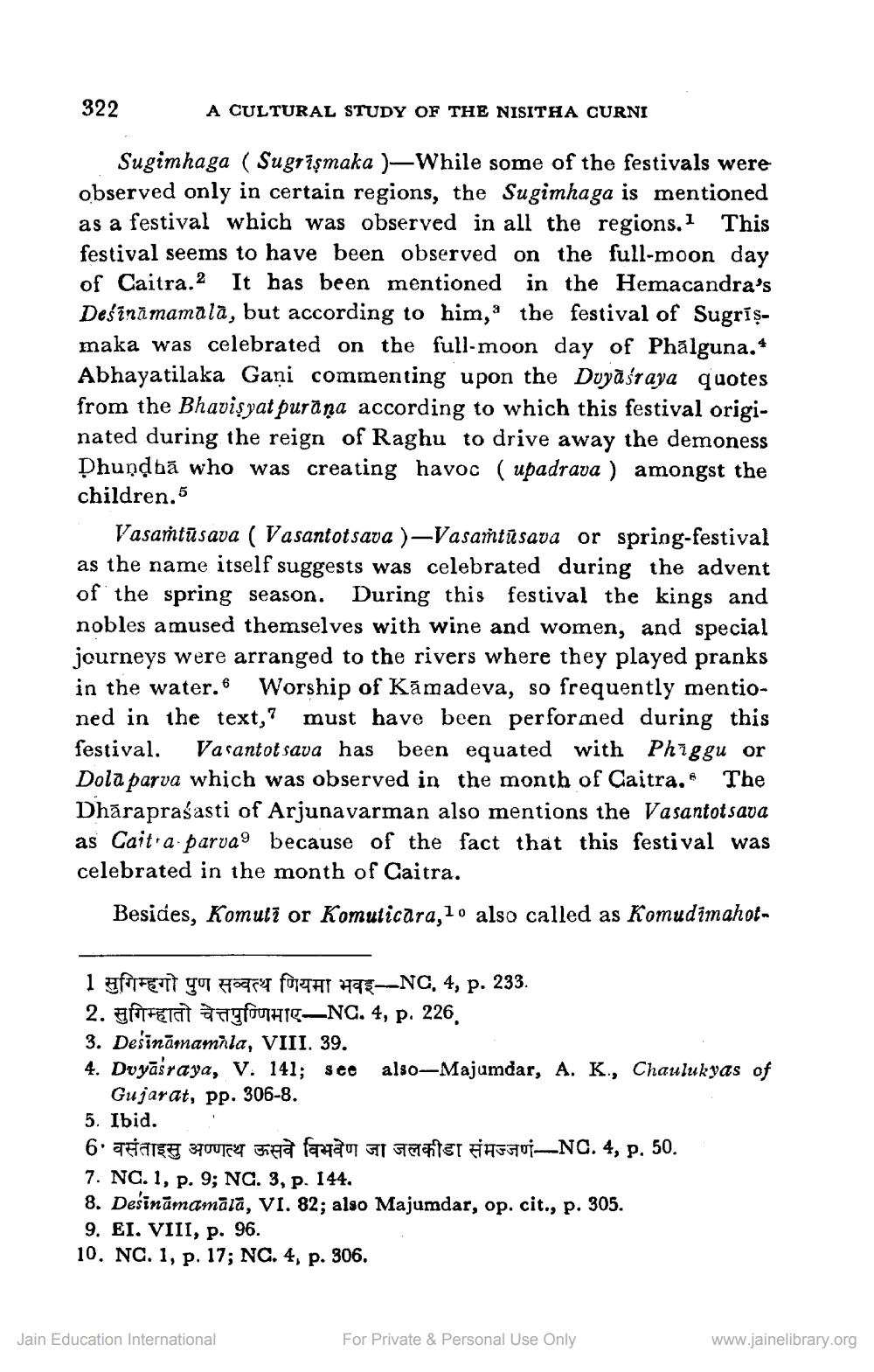________________
322
A CULTURAL STUDY OF THE NISITHA CURNI
Sugimhaga (Sugrīşmaka )—While some of the festivals were observed only in certain regions, the Sugimhaga is mentioned as a festival which was observed in all the regions. This festival seems to have been observed on the full-moon day of Caitra.2 It has been mentioned in the Hemacandra's Deśīnāmamala, but according to him,a the festival of Sugrísmaka was celebrated on the full-moon day of Phālguna.* Abhayatilaka Gani commenting upon the Duyāśraya quotes from the Bhavisyat purāna according to which this festival originated during the reign of Raghu to drive away the demoness Dhundbā who was creating havoc ( upadrava ) amongst the children. 5
Vasaṁtūsava ( Vasantot sava )-Vasaṁtū sava or spring-festival as the name itself suggests was celebrated during the advent of the spring season. During this festival the kings and nobles amused themselves with wine and women, and special journeys were arranged to the rivers where they played pranks in the water. Worship of Kāmadeva, so frequently mentioned in the text,? must have been performed during this festival. Vasantot sava has been equated with Phiggu or Dola parva which was observed in the month of Caitra. The Dhāraprasasti of Arjunavarman also mentions the Vasantotsava as Caitra parva9 because of the fact that this festival was celebrated in the month of Caitra.
Besides, Komulī or Komuticara, lo also called as Komudimahof
1 EfTENT YOU Haaret for at H75--NC. 4, p. 233. 2. gritain daytouHTG–NC. 4, p. 226. 3. Dešināmamala, VIII. 39. 4. Dvyāšraya, V. 141; see also-Majumdar, A. K., Chaulukyas of
Gujarat, pp. 306-8. 5. Ibid. 6. qfarsa source Frana faza gl Feater FHFHO_NC. 4, p. 50. 7. NC. 1, p. 9; NO. 3, p. 144. 8. Dešināmamālā, VI. 82; also Majumdar, op. cit., p. 305. 9. EI. VIII, p. 96. 10. NO. 1, p. 17; NC. 4, p. 306.
Jain Education International
For Private & Personal Use Only
www.jainelibrary.org




